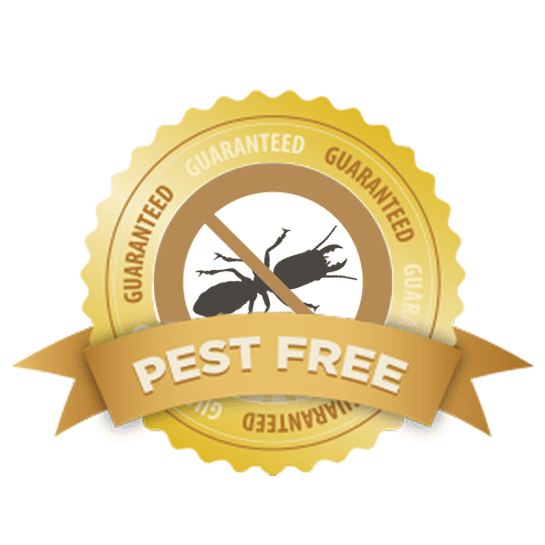A1 Bed Bug Exterminator Charlotte - Effective and Cost Effective Services
Wiki Article
Bed Bug Treatment Break Down: Contrasting Chemical Vs. Non-Chemical Solutions
In the world of parasite control, specifically when dealing with the consistent issue of bed bugs, the option between chemical and non-chemical therapy solutions can be a critical one. Both approaches offer unique advantages and disadvantages, affecting factors such as efficiency, safety and security factors to consider, and overall price. By taking a look at the nuanced information of each method, a clearer understanding of which path to pursue in resolving a bed bug invasion can be achieved.Effectiveness of Chemical Treatments
Chemical treatments for bed bug invasions have been commonly identified for their quick and powerful efficiency in eradicating these pests. When considering the effectiveness of chemical therapies, it is crucial to comprehend that they can provide a fast and complete service to a bed pest issue.Moreover, chemical therapies have the benefit of using residual results, implying that they can remain to get rid of bed insects also after the preliminary application. This residual action is specifically valuable in combating any type of possible re-infestations. In addition, the quick activity of chemical treatments can bring alleviation to people encountering serious bed pest infestations, enabling them to gain back control of their home promptly.
Safety Concerns With Chemical Solutions
One vital facet that calls for careful factor to consider when utilizing chemical options for bed insect therapy is ensuring the safety and security of owners and the environment. While chemical treatments can be efficient in getting rid of bed insects, they may present risks otherwise managed effectively. One of the primary security problems with chemical options is the prospective damage they can create to human health. Direct exposure to particular chemicals made use of in bed insect treatments can lead to respiratory system concerns, skin inflammation, or various other negative reactions, specifically in people with pre-existing conditions or sensitivities. Furthermore, incorrect application or dosage of chemical pesticides can result in poisonous residues remaining in the treated location, posturing long-lasting health and wellness risks to owners.In addition, the ecological impact of chemical services is an additional significant factor to consider. Some pesticides utilized in bed bug treatments may be damaging to advantageous pests, wildlife, and communities if they seep into the soil or water supply. It is vital to utilize chemical therapies judiciously, complying with safety standards, and thinking about much less toxic options to alleviate these threats and make sure the risk-free and reliable management of bed bug invasions.
Advantages of Non-Chemical Strategies
Thinking about the potential safety worries and ecological influence connected with chemical solutions for bed bug treatment, checking out non-chemical strategies provides an appealing option with numerous distinctive advantages. Non-chemical methods use a much safer choice for houses, especially those with pet dogs, people, or youngsters conscious extreme chemicals. These approaches eliminate the risks of direct exposure to toxic compounds, minimizing the capacity for unfavorable health impacts. Moreover, non-chemical treatments are ecologically friendly, as they do not add to air or water pollution, making them a sustainable selection for bug control.Furthermore, non-chemical options can be efficient in targeting bed insects, consisting of hard-to-reach locations where chemical treatments might not pass through - A1 pest control charlotte nc bed bugs. Approaches such as heat treatment, vacuuming, heavy steam cleansing, and mattress coverings give thorough eradication without the use of hazardous chemicals.
Limitations of Non-Chemical Treatments

Additionally, non-chemical treatments often need numerous applications to achieve successful elimination. This can be lengthy and might not always ensure full removal of all bed bugs and their eggs, specifically in hard-to-reach or concealed locations.
Additionally, the success of non-chemical therapies greatly counts on appropriate execution and thoroughness, which can be challenging for people without specialist know-how. Inadequate application of non-chemical methods might cause insufficient removal, bring about relentless problems and the requirement for added therapies.
Consequently, while non-chemical therapies have their benefits, it is vital to acknowledge these constraints and consider them when determining one of the most reliable strategy for taking care of bed pest problems.
Cost Comparison: Chemical Vs. Non-Chemical Options
Provided the constraints linked with non-chemical therapies, a vital aspect to review in Our site the context of bed pest monitoring is the cost comparison between chemical and non-chemical choices. In contrast, non-chemical therapies like hop over to here warmth treatment or vapor can be much more pricey, with expenses ranging from $1,000 to $6,000 for a whole home. While the preliminary cost of chemical therapies may appear reduced, numerous therapies may be needed to totally remove the infestation, potentially increasing the total price.Final Thought

Thinking about the potential safety issues and ecological effect linked with chemical solutions for bed insect treatment, checking out non-chemical methods provides a promising option with several distinctive advantages.Offered the restrictions connected with non-chemical therapies, a necessary aspect to review in the context of bed pest management is the expense comparison between chemical and non-chemical options. In contrast, non-chemical treatments like warm treatment or steam can be more expensive, with costs ranging from $1,000 to $6,000 for a whole home. While the first price of chemical therapies may seem lower, numerous therapies might be required to completely eliminate the infestation, possibly enhancing the total expense.In verdict, when comparing chemical and non-chemical bed insect therapy options, it termite prevention is crucial to think about efficiency, safety, benefits, limitations, and cost.
Report this wiki page